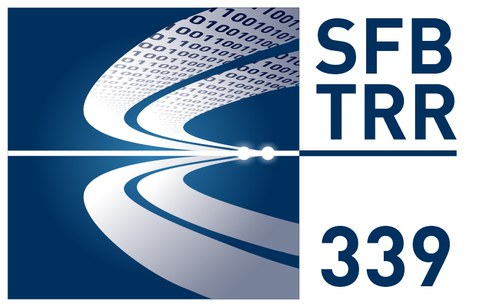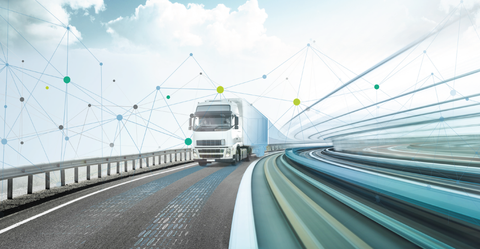Digital twin of the road system – Physical-informational representation of the future road system
Our new website is online: https://www.sfbtrr339.de
The mobility of people and goods is a central basis of our modern society with increasingly global and diverse networked processes. In its present form, mobility, especially with regard to road traffic, is currently confronted with global challenges (durability, safety, efficiency, ecology, costs, automation etc.) that urgently require fundamental solutions.
In the SFB/TRR 339 (TU Dresden, RWTH Aachen), a spatially and temporally multi-dimensional, digital/virtual image (reality model in space and time) of vehicle, tires and road surface (concrete and asphalt) taking into account the road pavements (integrated multi-functionality) can be developed and researched. The reality model combines all available and relevant information about the "Road of the Future" from physical investigations and modeling as well as from informational and traffic data (sensor data, data models etc.). It enables and requires the interaction between the physical-structural and the informational-traffic design level. This interactive reality model in space and time is called the digital twin of the road system and is used in perspective to analyze, control and forecast the physical original (real road system consisting of vehicle, tires, lane, nearby street space) by means of common interfaces. The extension of the road to a high-tech platform is to be developed using the new, interdisciplinary research approach (civil engineering, computer science, society).
The research approach is based on a three-stage development strategy: In Phase I, the required submodels are designed and developed. In Phase II, the partial models are combined using common, standardized interfaces and integrated into a holistic model of the road system (digital shadow), which in Phase III will allow the analysis and control of the road system with its own control components (digital twin). The aim is to achieve the vehicle's already high level of development in the same way for the road system, so that a new quality of integration of vehicles and infrastructure can also be achieved. The overriding aspects of law and sustainability shall be explicitly included in the conception and development of the digital twin of the road system from the start on. The digital twin of the road system will lead to an intelligent, gentle and sustainable use of the road infrastructure. Other expected results are groundbreaking condition forecasts, interfaces to local traffic control, the optimal synthesis of building materials and structures, interfaces to automated driving and the reduction of emissions, e.g. by minimizing traffic jam scenarios or long-lasting road infrastructure components (use of resources).
Subprojects:
-
A01 - Physical-numerical modeling of the functionalized road under tire load
-
A02 - The chassis as a data source for the digital twin road
-
A03 - Sensitive road surface: Detection of wheel loads with high temporal and spatial resolution
-
A04 - Synthesis of the real stresses in road pavements using new laboratory technology
-
A05 - Seamless base layer made of concrete - Sustainable, permanent, functionalized (concrete superstructure type)
-
A06 - Optimization of high-performance asphalt for a permanent physical platform of a Cyber-Physical System (CPS) road (track type asphalt)
-
A07 - Interaction between the road construction and the ground
-
A08 - Wireless communication systems for data transmission from integrated sensors of the "Road of the Future" system
-
B01 - Adaptive geometric-semantic multi-LOD building model of the road infrastructure of the Cyber-Physical System (CPS) road
-
B02 - Functionalization of roadside sensors to generate complex traffic-related load data
-
B03 - Cooperative sensor data fusion for generating high-precision position data
-
B04 - Model and data synthesis of the tire-road system (long-term forecast) taking into account polymorphic uncertainty
-
B05 - Coupling of intrusive and non-intrusive locally decomposed model reduction methods for fast simulations of road systems
-
B06 - Efficient twinning in the digital twin street
-
B07 - Consistency of multi-physical and multi-scale simulation models for the digital twin road
-
C01 - Legal and political challenges of cyber Physical Social System (CPsS) street
-
C02 - Life cycle-based sustainability assessment method for the digital twin street
-
MGK - Module Integrated Graduate School
-
INF - information infrastructure of the SFB / TRR 339
-
Z - Central tasks of the SFB / TRR 339


